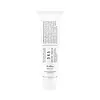What's inside
What's inside
 Key Ingredients
Key Ingredients

 Benefits
Benefits

 Concerns
Concerns

No concerns
 Ingredients Side-by-side
Ingredients Side-by-side

Water
Skin ConditioningMelaleuca Alternifolia Leaf Water
AntimicrobialPropanediol
SolventGlycerin
Humectant1,2-Hexanediol
Skin ConditioningHydrogenated Polydecene
EmollientVinyldimethicone
C14-22 Alcohols
Emulsion StabilisingNiacinamide
SmoothingCaprylic/Capric Triglyceride
MaskingPanthenol
Skin ConditioningDicaprylyl Carbonate
EmollientButylene Glycol
HumectantAmmonium Acryloyldimethyltaurate/Vp Copolymer
Caprylyl Methicone
Skin ConditioningPolymethylsilsesquioxane
C12-20 Alkyl Glucoside
EmulsifyingHydroxyacetophenone
AntioxidantAcrylates/C10-30 Alkyl Acrylate Crosspolymer
Emulsion StabilisingPolyquaternium-51
Skin ConditioningEthylhexylglycerin
Skin ConditioningTromethamine
BufferingSodium Hyaluronate
HumectantSodium Stearoyl Glutamate
CleansingCoptis Japonica Root Extract
Skin ConditioningCentella Asiatica Leaf Water
Skin ConditioningBeta-Glucan
Skin ConditioningResveratrol
AntioxidantHydrolyzed Hyaluronic Acid
HumectantCamellia Sinensis Leaf Water
MaskingTocopherol
AntioxidantMadecassoside
AntioxidantSodium Dna
Skin ConditioningCentella Asiatica Extract
CleansingCeramide NP
Skin ConditioningTannic Acid
AstringentDisodium EDTA
Sodium Phytate
Water, Melaleuca Alternifolia Leaf Water, Propanediol, Glycerin, 1,2-Hexanediol, Hydrogenated Polydecene, Vinyldimethicone, C14-22 Alcohols, Niacinamide, Caprylic/Capric Triglyceride, Panthenol, Dicaprylyl Carbonate, Butylene Glycol, Ammonium Acryloyldimethyltaurate/Vp Copolymer, Caprylyl Methicone, Polymethylsilsesquioxane, C12-20 Alkyl Glucoside, Hydroxyacetophenone, Acrylates/C10-30 Alkyl Acrylate Crosspolymer, Polyquaternium-51, Ethylhexylglycerin, Tromethamine, Sodium Hyaluronate, Sodium Stearoyl Glutamate, Coptis Japonica Root Extract, Centella Asiatica Leaf Water, Beta-Glucan, Resveratrol, Hydrolyzed Hyaluronic Acid, Camellia Sinensis Leaf Water, Tocopherol, Madecassoside, Sodium Dna, Centella Asiatica Extract, Ceramide NP, Tannic Acid, Disodium EDTA, Sodium Phytate
Water
Skin ConditioningStearic Acid
CleansingGlycerin
HumectantDimethicone
EmollientDiethylhexyl Succinate
EmollientCetyl Alcohol
EmollientCocos Nucifera Oil
MaskingAloe Barbadensis Leaf Juice
Skin ConditioningBakuchiol
AntimicrobialCamellia Sinensis Leaf Extract
AntimicrobialCaramel
Cosmetic ColorantCarbomer
Emulsion StabilisingEthylhexylglycerin
Skin ConditioningParfum
MaskingHelianthus Annuus Extract
EmollientOryza Sativa Bran Extract
Skin ConditioningPhenoxyethanol
PreservativePolysorbate 60
EmulsifyingPotassium Hydroxide
BufferingRosmarinus Officinalis Leaf Extract
AntimicrobialSodium Hyaluronate
HumectantTocopherol
AntioxidantVaccinium Macrocarpon Seed Oil
Skin ConditioningBenzoic Acid
MaskingBenzyl Benzoate
AntimicrobialChlorphenesin
AntimicrobialCitral
PerfumingCitric Acid
BufferingCoumarin
PerfumingHexyl Cinnamal
PerfumingPentylene Glycol
Skin ConditioningPotassium Sorbate
PreservativeSodium Benzoate
MaskingSorbic Acid
PreservativeCI 17200
Cosmetic ColorantWater, Stearic Acid, Glycerin, Dimethicone, Diethylhexyl Succinate, Cetyl Alcohol, Cocos Nucifera Oil, Aloe Barbadensis Leaf Juice, Bakuchiol, Camellia Sinensis Leaf Extract, Caramel, Carbomer, Ethylhexylglycerin, Parfum, Helianthus Annuus Extract, Oryza Sativa Bran Extract, Phenoxyethanol, Polysorbate 60, Potassium Hydroxide, Rosmarinus Officinalis Leaf Extract, Sodium Hyaluronate, Tocopherol, Vaccinium Macrocarpon Seed Oil, Benzoic Acid, Benzyl Benzoate, Chlorphenesin, Citral, Citric Acid, Coumarin, Hexyl Cinnamal, Pentylene Glycol, Potassium Sorbate, Sodium Benzoate, Sorbic Acid, CI 17200
 Reviews
Reviews

Ingredients Explained
These ingredients are found in both products.
Ingredients higher up in an ingredient list are typically present in a larger amount.
Ethylhexylglycerin (we can't pronounce this either) is commonly used as a preservative and skin softener. It is derived from glyceryl.
You might see Ethylhexylglycerin often paired with other preservatives such as phenoxyethanol. Ethylhexylglycerin has been found to increase the effectiveness of these other preservatives.
Glycerin is already naturally found in your skin. It helps moisturize and protect your skin.
A study from 2016 found glycerin to be more effective as a humectant than AHAs and hyaluronic acid.
As a humectant, it helps the skin stay hydrated by pulling moisture to your skin. The low molecular weight of glycerin allows it to pull moisture into the deeper layers of your skin.
Hydrated skin improves your skin barrier; Your skin barrier helps protect against irritants and bacteria.
Glycerin has also been found to have antimicrobial and antiviral properties. Due to these properties, glycerin is often used in wound and burn treatments.
In cosmetics, glycerin is usually derived from plants such as soybean or palm. However, it can also be sourced from animals, such as tallow or animal fat.
This ingredient is organic, colorless, odorless, and non-toxic.
Glycerin is the name for this ingredient in American English. British English uses Glycerol/Glycerine.
Learn more about GlycerinSodium Hyaluronate is hyaluronic acid's salt form. It is commonly derived from the sodium salt of hyaluronic acid.
Like hyaluronic acid, it is great at holding water and acts as a humectant. This makes it a great skin hydrating ingredient.
Sodium Hyaluronate is naturally occurring in our bodies and is mostly found in eye fluid and joints.
These are some other common types of Hyaluronic Acid:
Learn more about Sodium HyaluronateTocopherol (also known as Vitamin E) is a common antioxidant used to help protect the skin from free-radicals and strengthen the skin barrier. It's also fat soluble - this means our skin is great at absorbing it.
Vitamin E also helps keep your natural skin lipids healthy. Your lipid skin barrier naturally consists of lipids, ceramides, and fatty acids. Vitamin E offers extra protection for your skin’s lipid barrier, keeping your skin healthy and nourished.
Another benefit is a bit of UV protection. Vitamin E helps reduce the damage caused by UVB rays. (It should not replace your sunscreen). Combining it with Vitamin C can decrease sunburned cells and hyperpigmentation after UV exposure.
You might have noticed Vitamin E + C often paired together. This is because it is great at stabilizing Vitamin C. Using the two together helps increase the effectiveness of both ingredients.
There are often claims that Vitamin E can reduce/prevent scarring, but these claims haven't been confirmed by scientific research.
Learn more about TocopherolWater. It's the most common cosmetic ingredient of all. You'll usually see it at the top of ingredient lists, meaning that it makes up the largest part of the product.
So why is it so popular? Water most often acts as a solvent - this means that it helps dissolve other ingredients into the formulation.
You'll also recognize water as that liquid we all need to stay alive. If you see this, drink a glass of water. Stay hydrated!
Learn more about Water